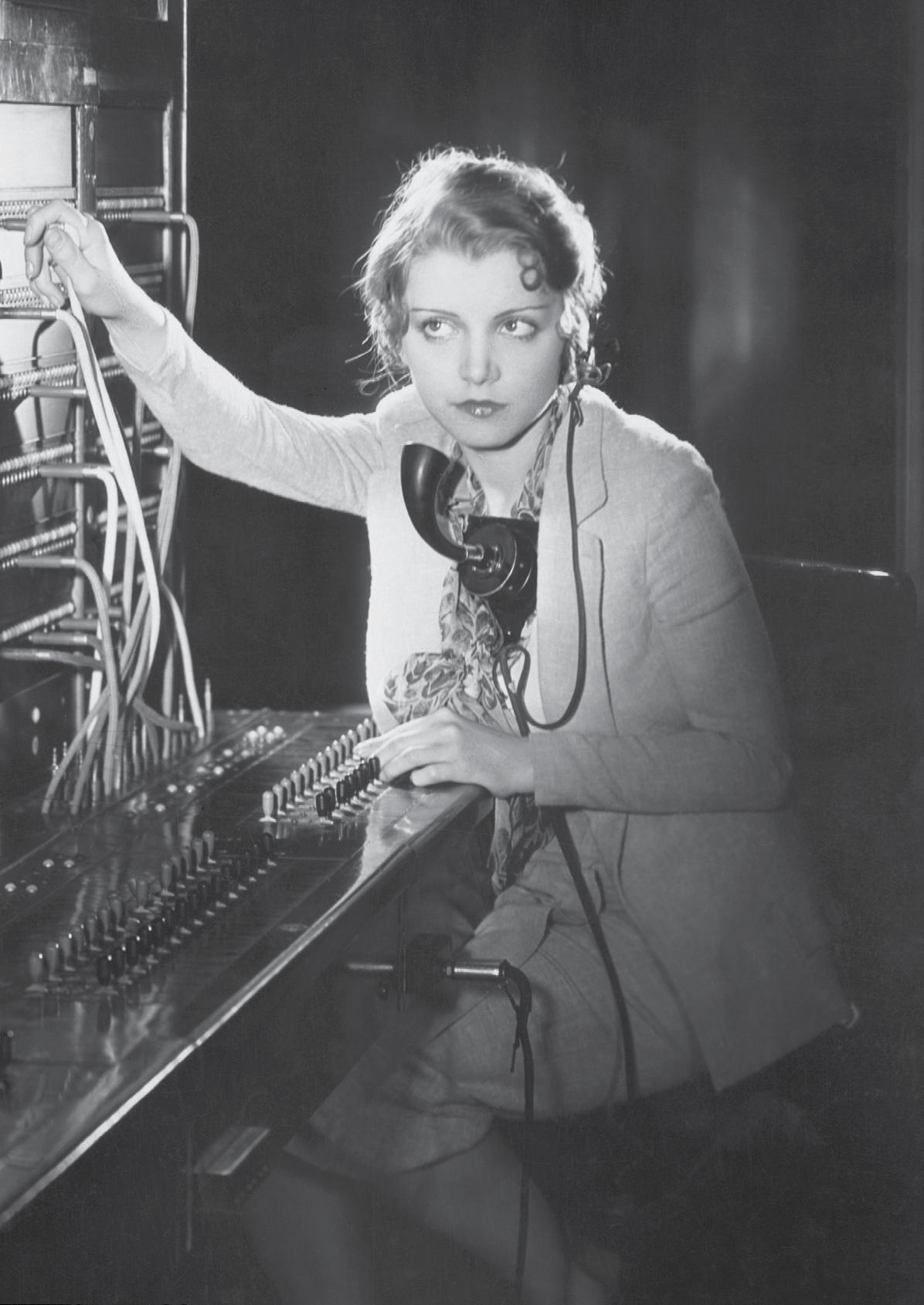
4 minute read
TOO SMART FOR OUR OWN GOOD
BY SIMON HARDING
There’s something extremely polarising about the advent of new technology and, the bigger the leap, the greater that dissonance becomes. Some embrace the latest advances with feverish excitement; others fear the change they will bring. In the end, only time can judge the impact of innovation’s inexorable march.
Take the telephone, for example. Some marvelled at the possibilities it would bring. Even Queen Victoria, who was fortunate enough to receive a personal demonstration from Alexander Graham Bell himself, was so taken by the device that she asked – albeit by letter – if she could purchase one. Presumably she saw how it would revolutionise communication across the empire.
Others took the new invention with a heavy dose of scepticism and more than a degree of fear.
ACCORDING TO MULTINATIONAL COMPANY ERICSSON, SMALL POCKETS OF PEOPLE IN SWEDEN EVEN FELT PHONES WERE THE INSTRUMENT OF THE DEVIL – TO THE POINT WHERE IT BECAME DIFFICULT TO RECRUIT PEOPLE TO MANAGE THE TELEPHONE STATION.
It’s safe to say that time has judged the telephone as a device that brought mankind together, and it’s hard to imagine a world in which it didn’t exist. Alexander Graham Bell was, without doubt, a visionary. But so too, it seems, were some of his detractors.
As far back as 1877 – a year after the US patent for the telephone was granted to Bell – a New York Times editorial proclaimed that, as a result of his new invention, people would soon be nothing but heaps of transparent jelly to each other. It’s difficult to be certain what was meant by that comment, but when you consider the ubiquity and indispensability of today’s smart phone, its users totally connected yet completely isolated from those around them, you could be forgiven for thinking that perhaps they had a point.
The speed at which technology has evolved the humble telephone into a full-blooded entertainment centre in little more than a decade, means it is once more polarising perceptions. Initial fears around the cancer risk of mobile phone usage are no longer as loud as they once were and, according to Victoria’s Better Health Channel, intensive international research has found no conclusive evidence that mobile phones are damaging to health in the short or long term. Instead, people are turning their attention to the amount of time they, and their children, are spending looking at their phones.
A recent article in The New York Times suggests that American families are beginning to turn to coaches to help them parent their children through the minefield that is screen use today. That’s a
Be gone evil temptress of the wire!
For the last time Mum. The phone isn’t evil!
difficult thing for adults who themselves are experiencing the technology for the first time and battling their own inability to put the devices down – a 2019 US survey found that the average smartphone user checks their device 63 times per day, and 86% will check a device when speaking to family and friends. In Australia, the latest Deloitte mobile consumer survey claims that 39% of Australians with a smart phone are concerned they are using it too much.
So what exactly is it that these coaches offer? For $80 an hour, parents and children are encouraged to engage in sport, outdoor play and family time.
The Australian Government gives the same advice, for free. In its sedentary behaviour guidelines, it recommends that children between the ages of 5 and 17 years should engage in 60 minutes or more of moderate-to-vigorous physical activity and should spend no more than 2 hours per day looking at screens. The Royal Children’s Hospital in Melbourne believes the actual time spent is closer to 5 hours per day.
Usage of phones and screens is, of course, a problem that, in purchasing the devices, parents have helped to create. A 2017 CNN report claimed that 45% of children aged 10-12 in the USA had a smart phone on a post-paid plan and, even in Australia, the penetration is high. The Royal Children’s Hospital claims that almost all Australian teenagers and two-thirds of primary schoolaged children now have their own tablet or smartphone.
The Victorian Government is equally concerned about smart phones, to the point where it has announced a blanket ban on the use of mobile phones in schools from the start of the 2020 school year. It is doing so in an effort to reduce distractions and cyber-bullying, and hopefully improve education outcomes. Of course, this move has, itself, divided opinion.
Though many parents breathed a sigh of relief at the announcement, others claim that children should be taught how to use their phones responsibly. Besides, taking away a mobile phone during school time doesn’t take away a child’s ability to find distractions or communicate with others.
Afterall, Deloitte estimates that 89% of Australians now own a smartphone.
If you would like to understand more about the impacts of screen time, or would like ideas on how to manage it, the Office of the E-Safety Commissioner is a great place to start. They have some great tips about managing your child’s online activity and keeping them safe.

esafety.gov.au





